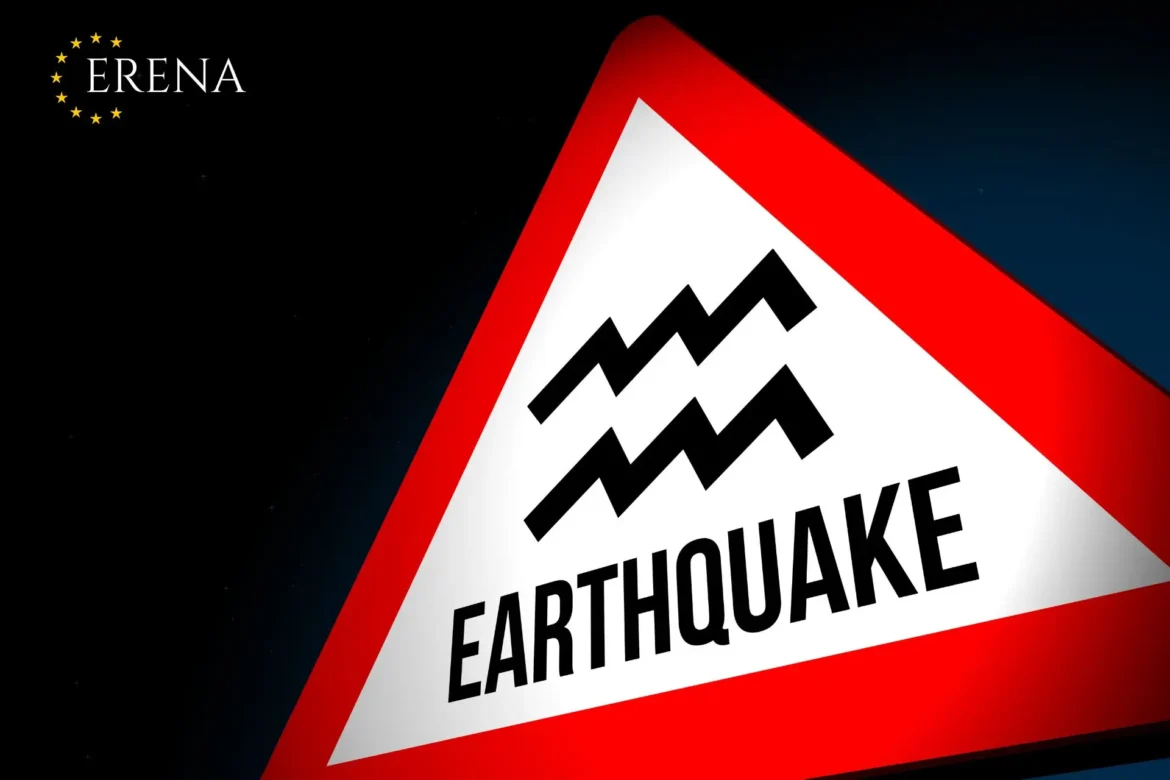Earthquakes are among the most destructive natural disasters, capable of causing significant damage to buildings and endangering lives. While Europe is not considered a highly seismically active region, certain countries, such as Italy, Greece, Turkey, and Romania, frequently experience earthquakes.
To protect your home and loved ones, it is essential to prepare in advance. In this guide, we will outline key steps to minimize risks and ensure safety.
🗺 Where Do Earthquakes Occur in Europe?
Seismic activity in Europe varies across different regions. Some of the highest-risk areas include:
🌍 Southern Europe:
✅ Italy (especially Naples, Sicily, and the Apennine regions)
✅ Greece (Athens, Crete, and the Ionian Islands)
✅ Spain (Granada, Andalusia)
✅ Turkey (Istanbul, Izmir)
🌍 Central and Eastern Europe:
✅ Romania (Vrancea Seismic Zone)
✅ Albania, Croatia, Serbia
✅ Bulgaria
These regions have a history of strong earthquakes, making earthquake preparedness a priority for residents.
🏠 How to Prepare Your Home for an Earthquake?
Buildings not designed for seismic activity are at risk of structural failure during strong tremors. Follow these recommendations to improve your home’s resilience:
🔧 1. Check Your Building’s Stability
✔ Hire a structural engineer to assess your home’s foundation and walls.
✔ Strengthen your home using earthquake-resistant technologies.
🛠 2. Secure Your Interior
✔ Anchor heavy furniture (such as cabinets, shelves, and mirrors) to the walls.
✔ Store fragile objects on lower shelves.
✔ Use flexible connectors for gas and electrical appliances to prevent leaks.
🚪 3. Keep Escape Routes Clear
✔ Ensure that hallways and exits are free of obstructions.
✔ Develop an evacuation plan for your family.
🎒 Preparing an Emergency Kit
During an earthquake, power, water, and communication services may be disrupted. Having an emergency kit can help you stay safe.
🛑 What should your kit include?
✔ Water – at least 3 liters per person per day.
✔ Non-perishable food – canned goods, nuts, dried fruits.
✔ First aid kit – bandages, antiseptics, painkillers, prescription medications.
✔ Flashlight and extra batteries.
✔ Battery-powered radio – to receive emergency updates.
✔ Copies of important documents – passport, insurance, emergency contacts.
💡 Tip: Store your emergency kit in a quickly accessible location, such as near the front door or under a bed.
🚨 What to Do During an Earthquake?
When an earthquake strikes, knowing how to react can save lives:
🏡 If You Are Indoors:
✔ Drop, cover, and hold on – take cover under a sturdy table.
✔ Stay away from windows, mirrors, and heavy furniture.
✔ If no shelter is available, sit near an interior wall and cover your head.
🚗 If You Are in a Car:
✔ Pull over to a safe location, away from bridges, tunnels, and buildings.
✔ Stay inside the vehicle until the shaking stops.
🌳 If You Are Outside:
✔ Move to an open space away from buildings and trees.
✔ Do not enter buildings until authorities confirm they are safe.
📢 What to Do After an Earthquake?
💡 Check yourself and those around you for injuries. Provide first aid if needed.
🚨 Exit buildings carefully, as aftershocks may cause additional damage.
📞 Use your phone only for emergencies to avoid overloading the network.
💧 Do not drink tap water until authorities confirm it is safe.
⚠ Important! Avoid using elevators after an earthquake, as power outages may leave you trapped.
🌍 How to Stay Informed About Earthquakes in Europe?
🔹 Seismic Activity Monitoring Websites:
📌 EMSC (European-Mediterranean Seismological Centre)
📌 USGS (United States Geological Survey)
🔹 Earthquake Alert Apps:
✅ Earthquake Alert!
✅ MyShake
✅ QuakeAlert
These services provide real-time earthquake warnings, helping you stay prepared.
📌 Conclusion
Earthquake preparedness is crucial for residents of seismic regions. Even if you live in a low-risk country, knowing the basics of earthquake safety is essential.
✔ Assess your home’s structural stability.
✔ Secure furniture and prepare an emergency kit.
✔ Develop an evacuation plan for your family.
✔ Subscribe to earthquake alert services.

